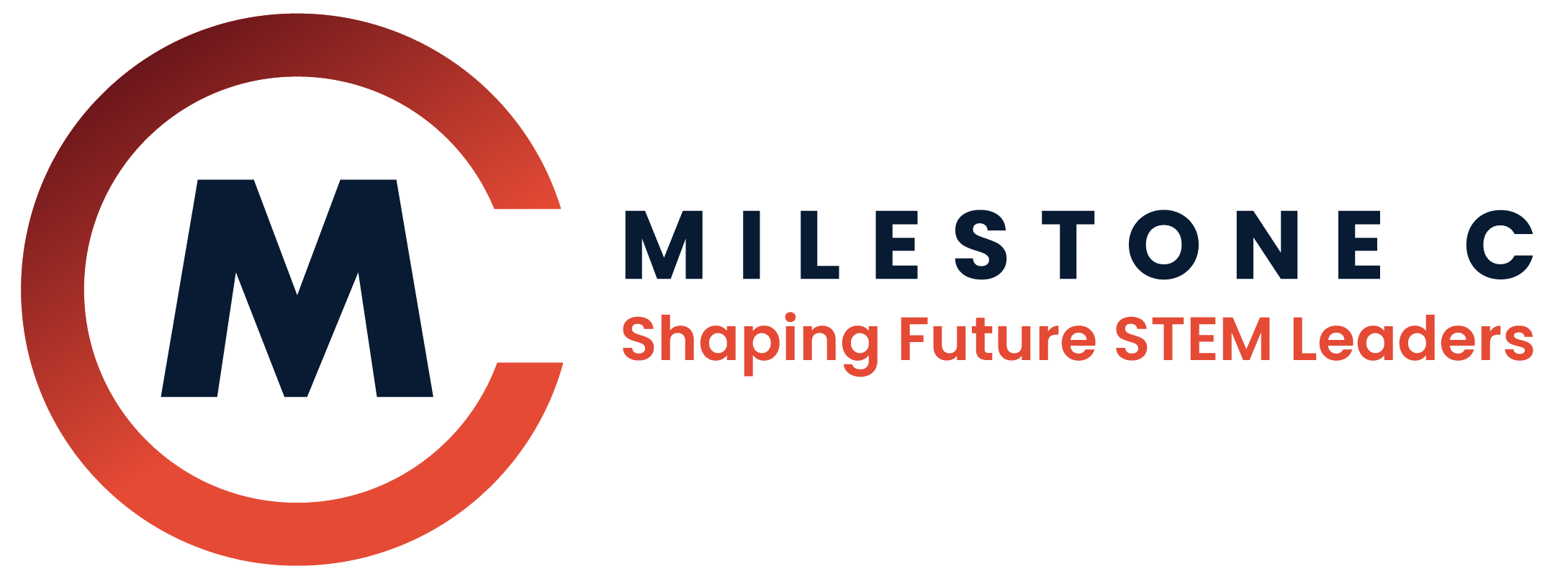Be data informed, here is the research supporting the mechanics of Milestone C.
Dr. Diane Souvaine, Chair of the National Science Board, National Science Foundation, advocates for all students having a hands-on STEM education so that STEM thrives in U.S. society (October 2019).
We know from the research and from our own experiences that hands-on STEM education is the key to a long-term STEM-literate and passionate society. As educators and STEM leaders, this is our goal and passion. Let us break down the research for you. We also encourage you to hear first-hand what educators, students, and parents say about Milestone C and our hands-on, minds-on approach to STEM and career education.
A Case for STEM—Demand & Supply
Let’s look at STEM through the eyes of an economist. There is the demand side and the supply side that show the complete picture. As educators, we need to support the development of a competitive supply.
The Demand Side
“Worldwide demand for STEM-capable (Science, Technology, Engineering, and Mathematics) workers keeps growing, driven by international opportunities and competition, and by rapid increases in the number of jobs that require STEM skills, including in lines of work that historically did not require Science & Engineering (S&E) knowledge. This situation will only become more urgent: by 2026, S&E jobs are predicted to grow by 13% compared with 7% growth in the overall U.S. workforce.” (National Science Foundation, 2020)
At the Bureau of Labor Statistics, when they talk about STEM occupations, these include computer and mathematical, architecture and engineering, and life and physical science occupations, as well as related managerial and postsecondary teaching occupations and sales occupations that require scientific or technical knowledge at the postsecondary level.
The U.S. Bureau of Labor Statistics projects between 2022 & 2023 a 10.8% change in STEM education careers compared to 2.3% in non-STEM careers. (BLS, Sept 2023)
In 2021, there were nearly 10 million workers in STEM occupations, and this total is projected to grow by almost 11% by 2031, over two times faster than the total for all occupations. STEM occupations also pay substantially more: Median annual wages as of May 2021 were $95,420 for STEM occupations, compared to $40,120 for non-STEM occupations. (Department of Labor, November 2022)
The Supply Side
When examining K-12 student performance in science and math, the U.S. places in the middle of a long list of countries (National Science Board, 2022). The rates at which U.S. undergraduates choose STEM majors trail those of several key competitors (National Science Board, February 2022). The United States is trailing STEM bachelor’s degrees in the world (National Science Board, February 2022).
Top U.S. students, who have great potential to become future science and technology innovators, are not being converted to majors and careers in STEM fields (Xianglei Chen, 2015).
The National Science Board calls on leadership in all segments of education, society, and governance to stamp-out numeric illiteracy. (National Science Board, 2020)
Hands-On, Minds-On—Experiential Learning
“Look with your eyes, not with your hands” may be good advice to your child for a quicker shopping experience, but it is the wrong approach to teaching and learning! The Brookings Institute advocates a “hands-on, minds-on” approach to teaching and learning (2016), which is not only used at elite universities and colleges (read more at: The Harvard Gazette, 2016; MIT Open Learning, 2023; MIT Minds and Hands at Work video), but also under-resourced schools looking to change the future of their students. Hands-on, minds-on is the philosophical core of Milestone C, which we integrate into our programming so it feels natural for your teachers and students.
Hands-on, minds-on (sometimes referred to in literature as experiential learning or project-based learning) is a clear path for student success in STEM teaching and learning and supports student success in the following ways:
More material is retained by students, in fact, 1.5 times more with hands-on teaching and learning than just presenting material (Freeman, et. al, 2014)
Simulates learning is an engaging environment (ibid.)
Hands-on develops critical thinking skills (ibid.)
Real-world experience and knowledge (also see Career in the Classroom below)
Builds a resume of both hard and soft skills for students resulting in increased credentialing (35% more) and job placement right out of high school (Arefeh, Grosskopf, & Killingsworth, 2019)
Career in the Classroom
When it comes to career education, the research is also clear—students listen to their teachers and parents more than any other source when it comes to information on higher education and career advice. Many studies also show that college and career planning with a career counselor occurs too late in a student’s school experience to make a marked difference.
Career-Related Teacher Support (CRTS) has been shown as one of the best ways to both decrease students dropping out of school and encourage connections between classroom content and career directions (Wong, Yuen, and Chen, 2020). These scientists found that when teachers facilitate career exploration and serve as role models for their students, their students are:
More engaged and motivated in the class
Happier at school
Have a reduced perception of barriers to educational and career pursuits
Milestone C designs its programs to expressly address the need for CRTS. We realize that teachers are very busy and most have not been in the private STEM workforce. We address CRTS in two ways. First, we build career into the curriculum, so the experiential modules are directly corrected with one or more career directions. Second, we offer for both the teachers and school administrators professional development/professional learning (PD/PL) to support, support, support.
Most schools are not able to hire former engineers with teaching credentials, Milestone C offers the support to make up the distance!
Looking to present this research to your Board of Education? Email info@milestonec.com and we will help you package the information needed for your presentation.






